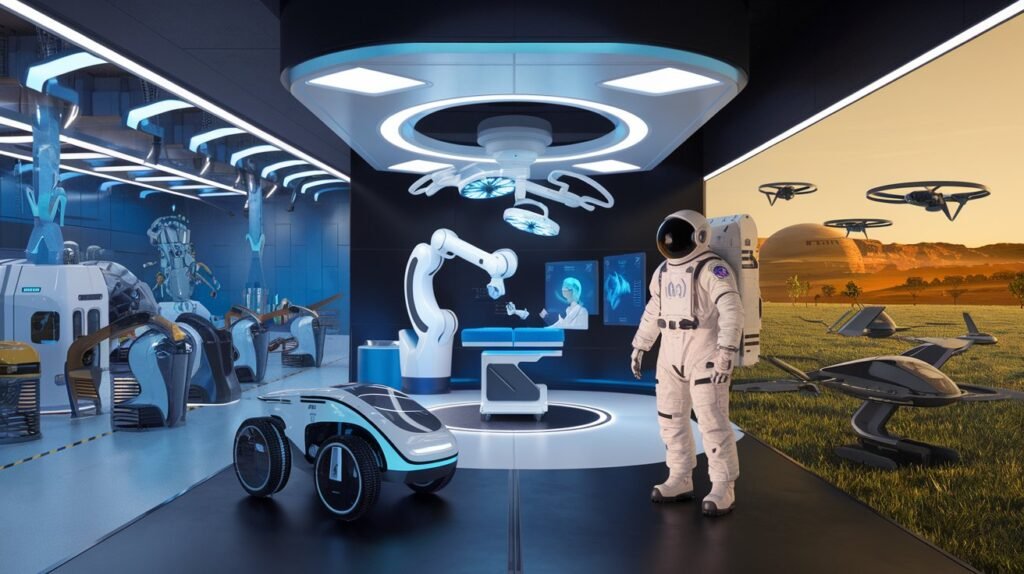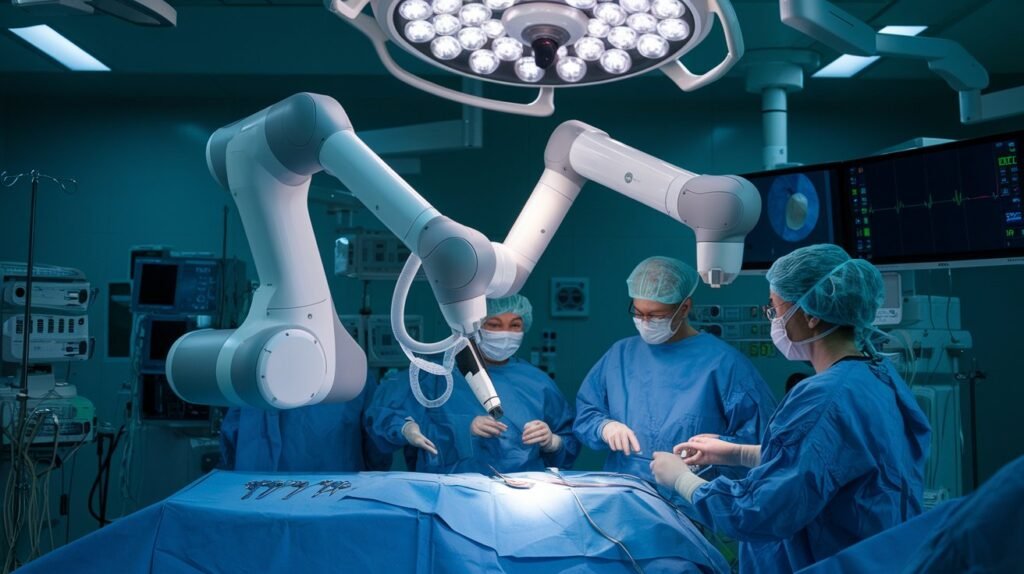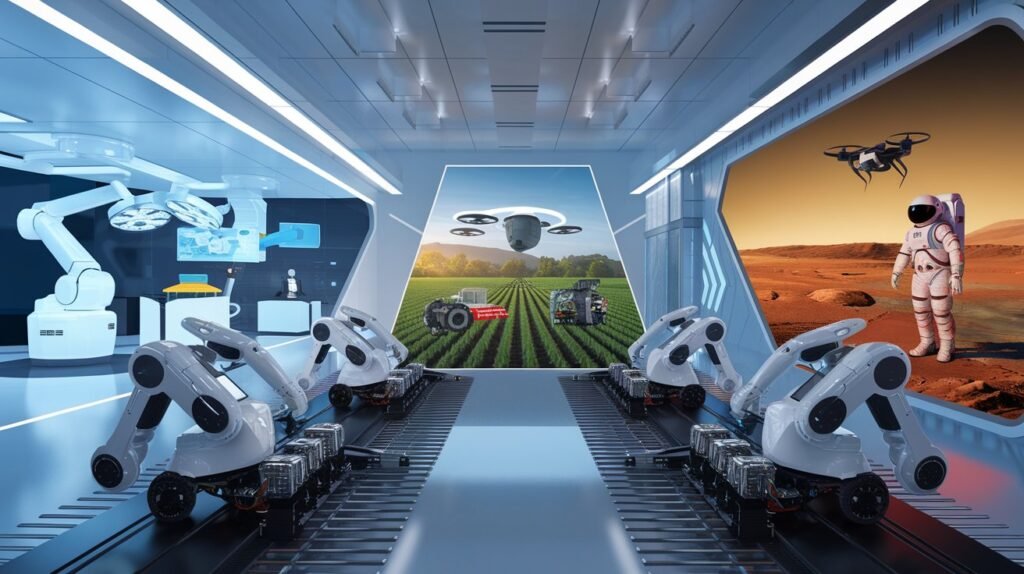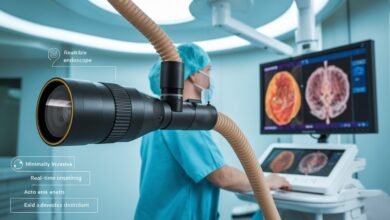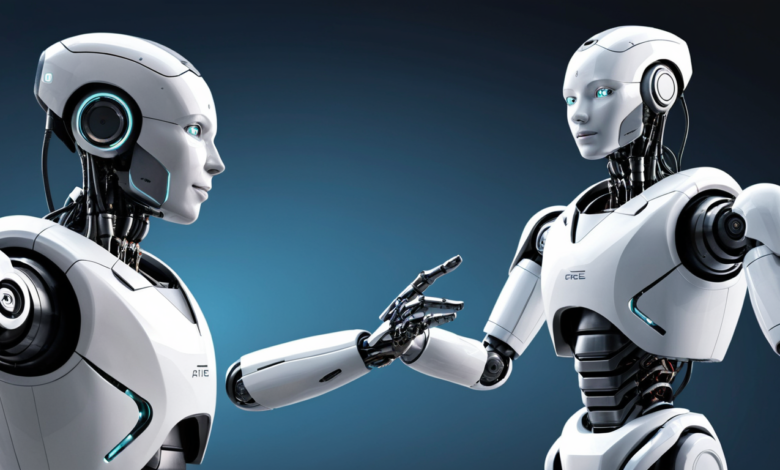
Robotics: Revolutionizing the Future with Technology
Introduction:
Robotics is an interdisciplinary field that combines engineering, computer science, and artificial intelligence (AI) to create machines capable of performing tasks traditionally done by humans. These machines, known as robots Today, industrial robots can be installed in the production line as they replace human workers, and enhance efficiency and output. can be designed for various applications, ranging from industrial automation to healthcare. In today’s rapidly evolving technological landscape, robotics is crucial in enhancing productivity, improving precision, and minimizing human effort.
Robots can operate autonomously or be guided by human instructions, depending on their level of sophistication. What makes robotics so essential is its ability to enhance efficiency in industries such as manufacturing, healthcare, and even space exploration. As the world becomes more technologically advanced, the demand for robots grows, influencing sectors in previously unimaginable ways.
Importance of Robotics in Modern Society:
Robotics has revolutionized industries across the globe by increasing production efficiency, reducing costs, and improving safety. From car assembly lines to precision surgeries, robots are integral to the functioning of modern industries. Moreover, as AI advances, robots are becoming more intelligent, more adaptable, and capable of interacting with humans in ways that were once science fiction.
History of Robotics:
The concept of robotics is not new. It has its roots in ancient myths and legends, where mechanical beings were often depicted as servants to their creators. However, the development of modern robotics began in the 20th century with advancements in engineering, electronics, and computing.
Early Developments:
The first industrial robot, Unimate, was created in 1961 to work on the General Motors assembly line. This marked the beginning of using robots for repetitive and hazardous tasks in manufacturing, leading to more efficient production processes. As technology advanced, so did the capabilities of robots, enabling them to perform more complex tasks.
Key Innovations in the Field:
Over the years, several key innovations have shaped the field of robotics. These include the development of robotic arms, autonomous vehicles, and AI-driven robots. These breakthroughs have allowed robots to operate in various environments, from factory floors to outer space, demonstrating their versatility and potential.
Types of Robotics:
Robotics is a broad field with various types of robots designed for different purposes. These types can be broadly categorized into industrial, medical, and service robotics.
Industrial Robotics:
Industrial robots are primarily used in manufacturing industries. They are designed to perform repetitive tasks such as welding, painting, and assembly with high precision and speed. Industrial robots have become integral to modern production lines, improving efficiency and reducing human labour.
Medical Robotics:
Medical robots assist surgeons in performing complex procedures with greater precision. They are also used in rehabilitation, enabling patients to recover faster. Robots like the Da Vinci Surgical System have revolutionized minimally invasive surgeries, making procedures safer and more accurate.
Service Robotics:
Service robots are designed to assist humans in various non-industrial environments. These robots can perform tasks such as cleaning, delivering goods, or providing customer service. They are becoming increasingly common in homes, hospitals, and businesses.
Components of a Robotic System:
A robotic system has several vital components that perform tasks efficiently. Understanding these components is essential to grasp how robots operate.
Sensors:
Environmental factors include temperature, pressure, and light, which are undergoing continuous measurements by the sensor input to the robot’s control system. These can include cameras, microphones, and pressure sensors, among others. Sensors enable robots to navigate their surroundings and react to changes in real time.
Actuators
Motors are elements that enable a robot to travel since actuators are the elements that allow movement to happen. They convert electrical signals into physical motion. Depending on the design, actuators can be motors, hydraulic cylinders, or pneumatic systems.
Controllers
Controllers are the robot’s brain, processing sensor data and making decisions based on pre-programmed instructions. These decisions are then sent to the actuators for the necessary actions.
5. Artificial Intelligence in Robotics
Robotics are now concomitant with AI since it play a core function in current overall robotic systems. Robots can make decisions, learn from their environment, and even adapt to new situations by integrating AI. AI allows robots to perform tasks requiring a level of previously impossible problem-solving.
Machine Learning in Robotic Systems
Machine learning enables robots to improve performance over time by learning from data. This is particularly useful in applications such as autonomous vehicles, where the robot must make split-second decisions based on vast data.
6. Autonomous Robots
Autonomous robots are capable of performing tasks without human intervention. These robots use AI, sensors, and advanced algorithms to navigate their environment and complete objectives.
Benefits and Challenges
While autonomous robots offer significant advantages, such as efficiency and safety, they also present challenges. These include the high cost of development, the need for robust AI systems, and concerns over safety and security.
7. Robotics in Healthcare
The healthcare industry has seen some of the most transformative applications of robotics. From surgery assistance to patient care, robots are enhancing healthcare quality worldwide.
Surgery Robots
Surgical robots assist doctors in performing delicate procedures with higher precision than human hands alone. This results in fewer complications, faster healing, and better prognosis.
Rehabilitation Robots
Robotic rehabilitation is employed in exercises administered in physiotherapy to enable the patients to move. These robots can assist in exercises and monitor patient progress, offering personalized care that speeds up recovery.
8. Robotics in Manufacturing
In manufacturing, robots are indispensable for automating repetitive tasks. They improve efficiency, reduce errors, and lower production costs.
Automation in Factories
Robots have long been used in factories for assembly, welding, and packaging tasks. Automation has increased production speed and consistency, leading to higher output and profitability.
Collaborative Robots (Cobots)
Cobots are deliberately developed to cover the need to operate autonomously in a joint environment with human employees. They have specific motion control and safe operation for humans and are designed for applications that involve cooperation between a man and a robot.
9. Robotics in Education
Robotics is increasingly vital in education, particularly STEM (Science, Technology, Engineering, and Mathematics). Robotics kits and learning tools help students understand complex concepts through hands-on experience.
Learning Tools for STEM Education
Robotics kits, such as LEGO Mindstorms and VEX Robotic, are popular in classrooms worldwide. These tools allow students to build and program robots, encouraging creativity and problem-solving skills.
10. The Future of Robotics
The future of robotic is full of wonderful opportunities. As technology develops, robots will become more complex and flexible and will merge into society.
Trends and Predictions
Some key trends include the development of more advanced AI, improvements in human-robot interaction, and the increasing use of robots in everyday tasks such as cleaning, cooking, and personal care.
11. Robotics and Human Interaction
As robots become more prevalent in society, understanding how humans and robots interact is critical. Robots must be designed to operate safely around humans and respond to social cues.
Human-Robot Collaboration
Cobots are developed to aid human operation and are intended to interact with human beings in various tasks. These robots have safety features such as force sensors that ensure they don’t harm their human counterparts.
12. The Role of Robotics in Space Exploration
Robotics has played a crucial role in space exploration, enabling scientists to explore environments that would otherwise be inaccessible.
Robotics in Mars Exploration
Mars rovers, such as NASA’s Perseverance and Curiosity, have gathered data about the Red Planet. These robots have advanced sensors and AI systems to navigate the harsh Martian terrain.
13. Robotics in Agriculture
Agriculture is increasingly adopting robotic for planting, harvesting, and monitoring crops. This technology is helping farmers improve efficiency and reduce labour costs.
Automation in Farming
Functions that robots can offer on farms include soil testing, planting, and eradicating weeds. Most importantly, this decreases the level of manual involvement and boosts yields.
Drones and Robotic Harvesters
Drones monitor large fields, while robotic harvesters can pick fruits and vegetables more efficiently than human workers.
14. Challenges Facing Robotics Development
Despite the many advantages of robotics, several challenges must be addressed to ensure continued growth in the field.
Technical Limitations
One of the biggest challenges facing robotic development is the technical limitations of current AI and machine learning systems. While robots are becoming more intelligent, there is still much room for improvement.
Cost and Scalability
Developing and deploying robots can be expensive, making it difficult for smaller businesses to use this technology. Additionally, scaling robotic solutions across different industries can be challenging.
15. Conclusion: The Impact of Robotics on Society
Robotic systems are increasing the effectiveness of different industries and patterns of life. As technology advances, robots will play an increasingly important role in society, performing tasks that were once thought impossible.
While there are challenges to overcome, the future of robotic is bright. With continued innovation, robots will become even more integrated into our daily lives, improving efficiency, safety, and quality of life.
FAQs:
What is the role of AI in robotics?
AI allows robots to process information, learn from their environment, and make decisions without human intervention, enhancing their efficiency and capabilities.
How are robots used in healthcare?
Robots assist in surgeries, rehabilitation, and patient care by performing precise tasks and monitoring patient progress.
What are the challenges in developing robotics?
Some of the key challenges include technical limitations, high development costs, and scalability issues across industries.
What is a collaborative robot (cobot)?
It means that the cobot will operate in close proximity to human employees, taking responsibility for some tasks in an industrial environment while keeping people safe and productive.
How are robots changing the manufacturing industry?
Robots automate repetitive tasks in manufacturing, improving production speed, accuracy, and cost-efficiency.
What is the future of robotics?
The future includes more intelligent, adaptable, and integrated robots in various aspects of life, from healthcare to home automation.
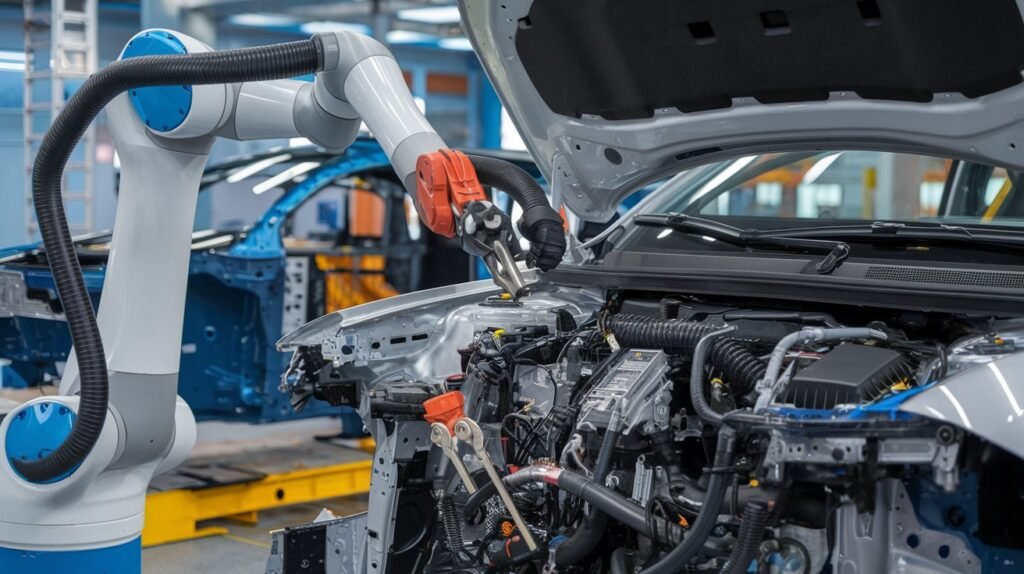 “TO READ MORE ARTICLES SO CLICK HERE”
“TO READ MORE ARTICLES SO CLICK HERE”
Suggestions Link’s:
Stay Safe Online: Essential Cybersecurity Tips for Everyone
Revo Technologies Murray Utah – 5 Reasons They’re the Best
How American Technology Consulting Firms are Shaping the Future of Innovation

